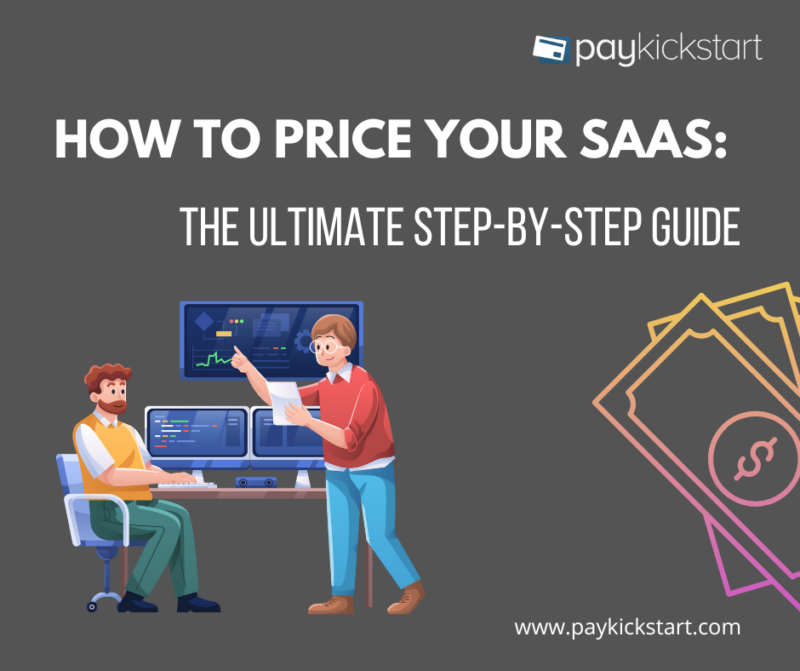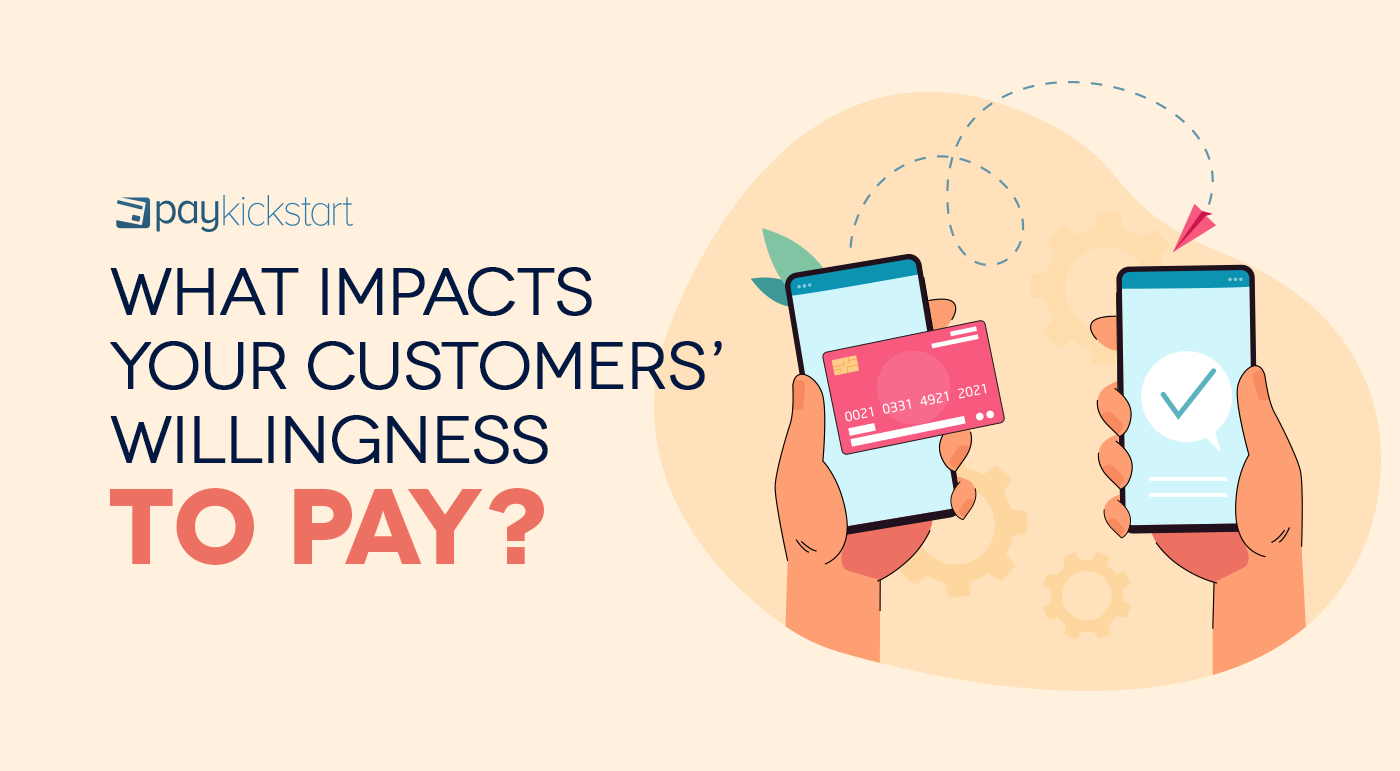Subscription growth hack (by PayKickstart)
Facebook Group - 3,932 members
Visit Group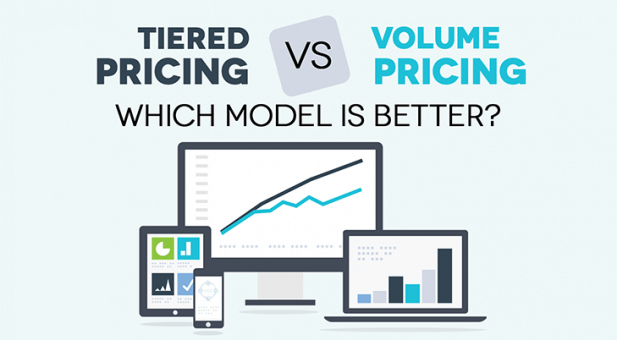
Tiered pricing and volume pricing are a bit more complex than standard pricing because the more someone buys the more the price changes.
There’s also an added layer of confusion around the terms because they’re often used interchangeably. In reality, there’s a difference between the two types of pricing.
One may maximize revenue while the other may maximize your ability to acquire new customers. In either case, it’s important to fully understand what each pricing model entails so you can make an informed decision.
This article looks at what tiered and volume pricing are as well as the advantages and disadvantages of each one.
Tiered pricing is when you define the price per unit within a specific range. When the number of units exceeds that range, subsequent products have a different price per unit.
For example, Acme Inc. has multiple pricing tiers which are as follows:
A customer buys 450 widgets.
The first 100 are billed at $8 for a total cost of $800.
101-200 are billed at $7 for a total cost of $700.
201-450 are billed at $6 for a total cost of $1,500.
The entire purchase amount is the sum of units associated with each pricing tier. In this case that would be 800 + 700 + 1500 = $3,000.
Once you fill up a tier, you move to the next tier and charge a different price. This process continues until the customer has reached the highest tier. In this case, the first 100 widgets are $8 each. Once you’ve sold all 100 from tier one, the next tier costs $7 each, the next tier $6 each and so on.
Tiered pricing also applies to features. You can charge on a per seat basis or tier the prices based on the features users take advantage of.
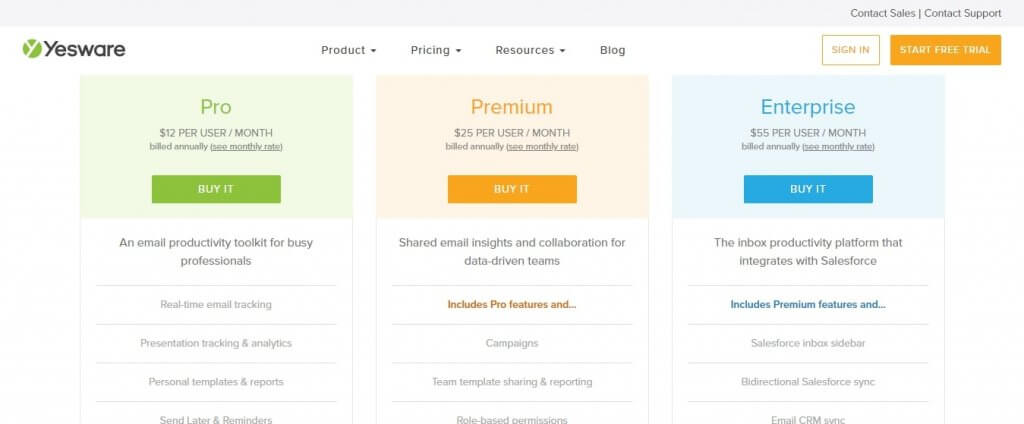
Yesware tiers their prices based on the features the user needs. The more features the higher the per seat pricing.
Tiered pricing is effective because it allows your customers to pay for what they can afford and also incentivizes them to buy more to qualify for discounts.
According to the latest promo code statistics, 48% of consumers are likely to purchase sooner with a discount tied to an offer. This makes tiered pricing an effective strategy to convert prospects who might be on the fence.
It also creates a lower barrier to entry which can draw new customers. These customers may eventually expand their usage and take advantage of more units.
This pricing model has a few clear advantages such as:
All good things have disadvantages as well.
Volume pricing also offers a discount when you move to higher tiers. The main difference is that with volume pricing the discount is applied to all units once the customer hits a higher tier.
If someone buys 100 widgets then they will pay $8 for each widget. If they add another 10 widgets and the number of units becomes 110 then they’ll pay $7 for each unit. The purchase amount for 110 units is less than the purchase amount for 100 units.
Using the same example from tiered pricing, a customer would only pay $2,700 for 450 widgets with volume pricing while they’d pay $3,000 with tiered pricing.
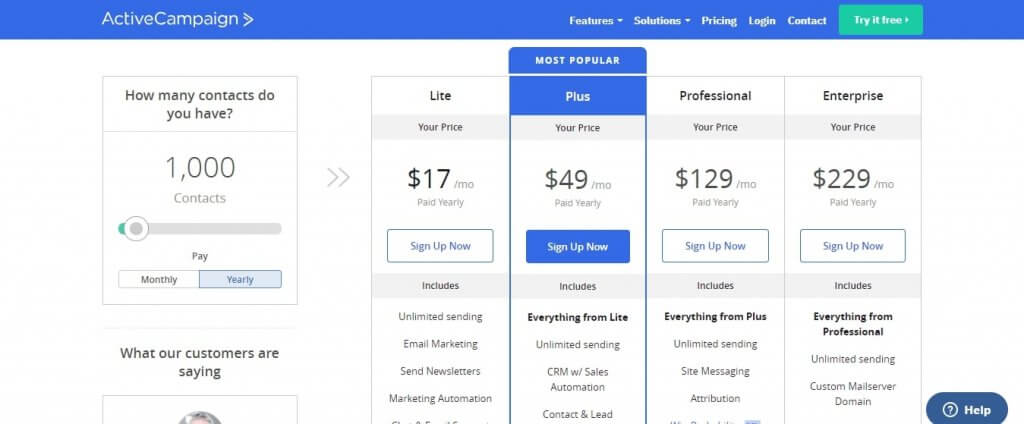
ActiveCampaign creates a number of tiers based on contacts as well as features. 500 contacts is $9/m while 1,000 contacts is $17 a month. The $1 discount is applied to the entire volume of contacts as opposed to the subsequent 500.
This pricing strategy is tricky because the first few units in each pricing tier are cheaper than the maximum units on the lower pricing tier.
For example, if your pricing tier ends at 200 units then a customer that buys 199 units pays more than the person buying 201 units.
Evaluate your pricing decision against a number of factors before you decide which strategy is best for you.
How much does it cost for you to deliver every unit of product to your customers? If it costs a considerable amount for each unit then tiered pricing may be the better option. You’re able to receive full value for the first units the customer orders then gradually decrease your margins on subsequent tiers.
When your marginal costs are low or even decrease with every unit, volume pricing may be the best option for you. A great example of this is SaaS because it benefits from economies of scale. A server costs x amount and if you have one unit then it still costs x amount. Three units will spread that cost out.
Volume pricing incentivizes customers to try your products and services when they would’ve been too expensive otherwise. A good upsell mechanism is the perfect way to capitalize on this.
If a user derives value from your product, they expand their usage and deliver less value to you for every unit they use. You can offset this diminishing value by upselling them into more expensive products and services.
Conversely, when you have no upsells on the backend, tiered pricing may be a better option. You lock in the value present on lower tiers and the discount only applies to the higher tiers.
Volume pricing and tiered pricing are effective ways to get new customers through the door.
At the same time, they incentivize your customers to buy more with every transaction. The method that works best for you depends on your goals, marginal costs, and whether or not you have the opportunity to use upsells.
Then try both of them to see which strategy yields the most profit for you over time.
Daniel Ndukwu is a regular contributor to the PayKickstart blog. He has extensive experience with online businesses, conversion optimization, and subscription revenue models. When he's not writing insightful content, he works with other entrepreneurs to help them grow their bottom line.
Read More About Daniel Ndukwu